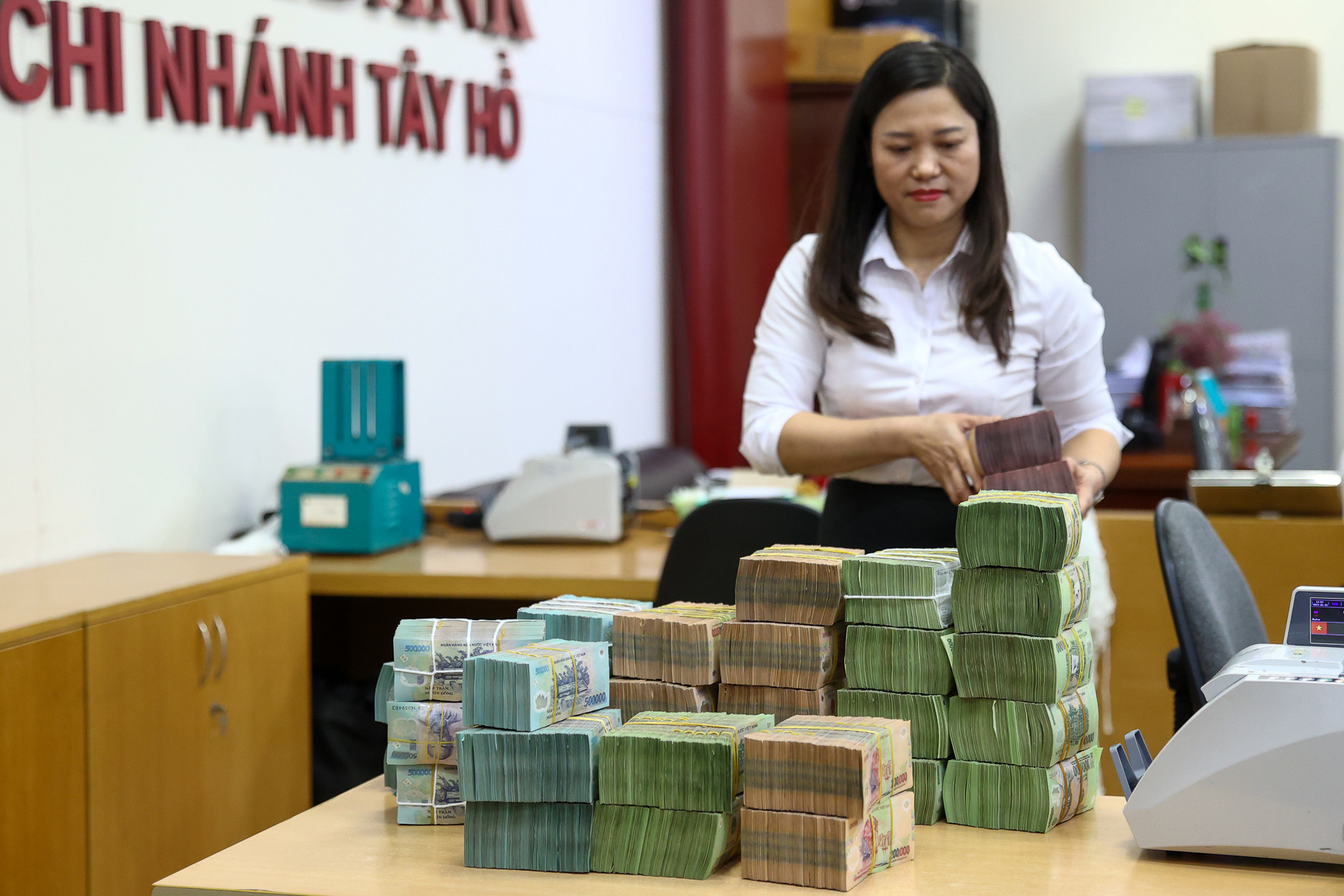Vietnam is currently pursuing an expansionary monetary policy marked by rapid credit growth and low interest rates. As of May 19, 2025, total outstanding credit in the system had reached VND 16.49 quadrillion (approximately USD 649 billion), up 5.59% from the end of 2024 and 18.67% year-over-year. Interbank interest rates continued to decline, with overnight rates at just 3.78% per annum, signaling a clearly loosened liquidity environment.

Given the domestic demand weakness and ongoing challenges facing businesses, this monetary loosening appears appropriate to maintain liquidity, reduce capital costs, and support growth. However, a major concern is the increasing reliance on credit as the go-to stimulus, while investment efficiency remains stagnant or even deteriorating.
Governor of the State Bank of Vietnam Nguyen Thi Hong recently told the National Assembly that Vietnam’s economic growth remains heavily dependent on capital, with the ICOR (Incremental Capital-Output Ratio) still high compared to regional peers.
A primary issue is that credit-now equivalent to over 134% of GDP-is being stretched across multiple functions: production, investment, social welfare, and consumption. This high credit-to-GDP ratio indicates a heavy reliance on bank loans and raises systemic risk if credit quality isn’t tightly controlled.
Meanwhile, the foreign exchange market and exchange rate are under pressure. By the end of May 2025, the USD/VND rate had risen by 0.68% in one month and 2.6% since the end of 2024, even as the global USD index declined. This suggests a domestic mismatch between supply and demand for foreign currency, possibly driven by high import demand, rising external payment needs, and U.S. tariff policies impacting exports and FDI inflows.
With a rising dollar and Vietnam’s dependency on imported inputs, cost-push inflation becomes more likely, increasing production and consumer costs-further straining businesses.
The State Bank has set a credit growth target of 16% for 2025, higher than in many regional economies. While this might seem growth-positive on paper, mere credit expansion without better capital allocation does not yield sustainable results. The Governor warned that excessive reliance on credit without institutional reform, stronger FDI-local linkages, and better capital absorption could trap the economy in a cycle of "more borrowing, more strain, and rising risks."
While monetary policy is doing its part-credit up, interest rates down, and liquidity abundant-the over-dependence on banking credit is evident: low investment efficiency, rising bad debt risk, and structural imbalances in resource allocation.
It’s time to temper expectations of monetary policy and shift toward greater fiscal leadership and long-term development strategy.
Surplus revenues, stagnant disbursement
As the economy still grapples with recovery challenges and weak market demand, coordinated monetary and fiscal policies are crucial for growth. However, budget data from the first five months of 2025 show a mismatch-revenue is ahead of schedule, while expenditure, especially development investment, remains sluggish.
Total state budget revenue in the first five months reached VND 1.139 quadrillion (USD 44.8 billion), equivalent to 57.9% of the annual estimate and up 24.5% year-on-year-an exceptionally high figure.
Domestic revenue totaled VND 987.5 trillion (USD 38.8 billion), up 27.6%, with corporate income tax rising 23.6% despite numerous business closures. Land and housing revenues soared 105%, including a 124.4% surge in land use fees-mostly due to one-off collections by localities, not real estate recovery.
Conversely, total expenditure only reached VND 833.8 trillion (USD 32.8 billion), or 32.7% of the plan, creating a gap of VND 306 trillion (USD 12 billion). Development investment, expected to be a key growth driver, stood at just VND 199.3 trillion (USD 7.8 billion), meeting only 25.2% of the target and disbursing only 24.1% of the plan.
This means funds are available but not being deployed in time or in the right places to generate economic ripple effects.
Despite impressive revenue growth, 112,000 businesses exited the market in five months-over 700 per day. Tax arrears jumped to VND 249.2 trillion (USD 9.8 billion), up nearly 26% since year-end 2024, showing weakening payment capacity.
Fiscal policy must take the lead in recovery
With monetary policy already expansive-credit up nearly 19% year-on-year and interest rates down-fiscal policy must act as a partner to support the struggling economy.
If revenue rises while spending lags, the state budget becomes a capital sink rather than a growth driver.
Accelerating public investment disbursement is vital, particularly in infrastructure, energy, and digital transformation. Tax and fee cuts should be prioritized for small and medium enterprises, especially in underperforming sectors like manufacturing, construction, and consumer services.
Instead of aggressively enforcing tax debt collection, more flexible policies such as deferred payments, rescheduling, or conditional waivers should be applied to retain businesses.
Monetary and fiscal policy cannot continue on divergent paths if macroeconomic stability and growth recovery are to be achieved. As the economy remains fragile, businesses vulnerable, and markets underdeveloped, policy alignment is essential for sustainable growth.
Vietnam has set an ambitious GDP growth target of at least 8% for 2025 and is aiming for double-digit growth from 2026 onward. While this signals strong government resolve, it also demands caution and synchronized policy execution amid ongoing global uncertainties.
Although institutions like the IMF (5.2%), World Bank (5.8%), and ADB (6.6%) project solid growth for Vietnam in 2025, these figures fall short of the government’s 8% target, indicating differing risk assessments and expectations.
In this context, preserving macroeconomic stability must remain a top priority. Cohesive, mutually supportive monetary and fiscal policies will be the cornerstone of overcoming challenges and achieving resilient growth.
Tu Giang